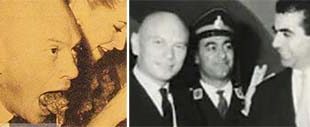Third Phase: January 17–25, 1987
The third phase of the War of the Cities coincided with Iran’s Operation Karbala 6. This round of urban warfare saw further escalation as both countries ramped up their missile campaigns. Iraq had by this time developed a more sophisticated missile program and was able to strike deeper into Iranian territory with greater accuracy.
Iran responded with its own missile capabilities, using North Korean-supplied Hwasong-5 missiles (a variant of the Soviet Scud-B). These missiles targeted key Iraqi military and economic centers, but the overall impact of Iran’s retaliation was less devastating than Iraq’s initial strikes.
Fourth Phase: February–April 1987
Between February and April 1987, the fourth series of urban bombardments took place. This period marked the longest continuous missile and aerial assault on cities in the entire conflict. Iraq focused on crippling Iran’s economic hubs, while Iran aimed to disrupt Iraq’s military operations.
This phase saw increased civilian casualties as both sides targeted densely populated areas. Iran’s ability to launch counterattacks remained limited, but it continued to retaliate whenever possible. The international community once again condemned the attacks, yet no concrete actions were taken to prevent further escalation.

